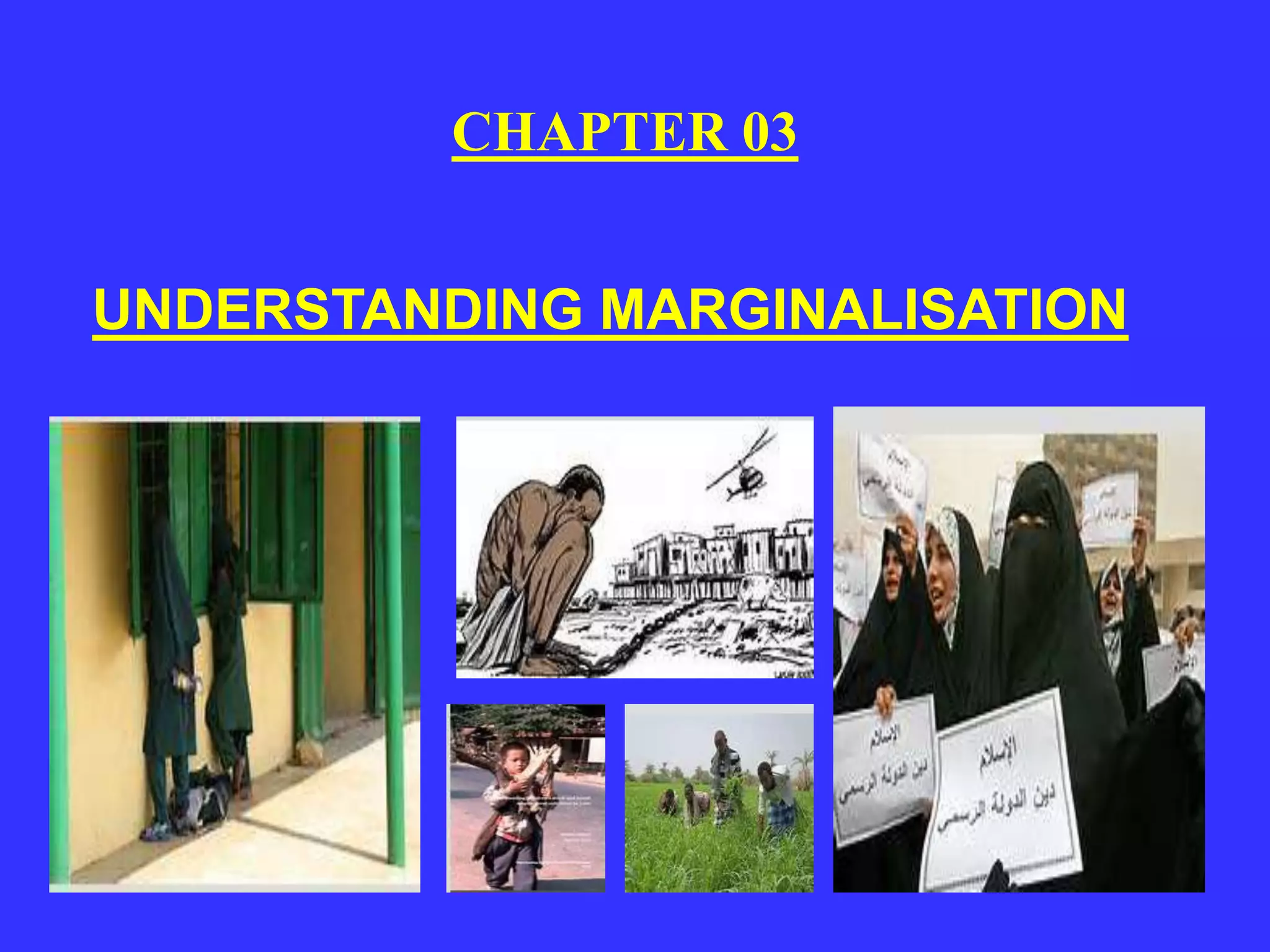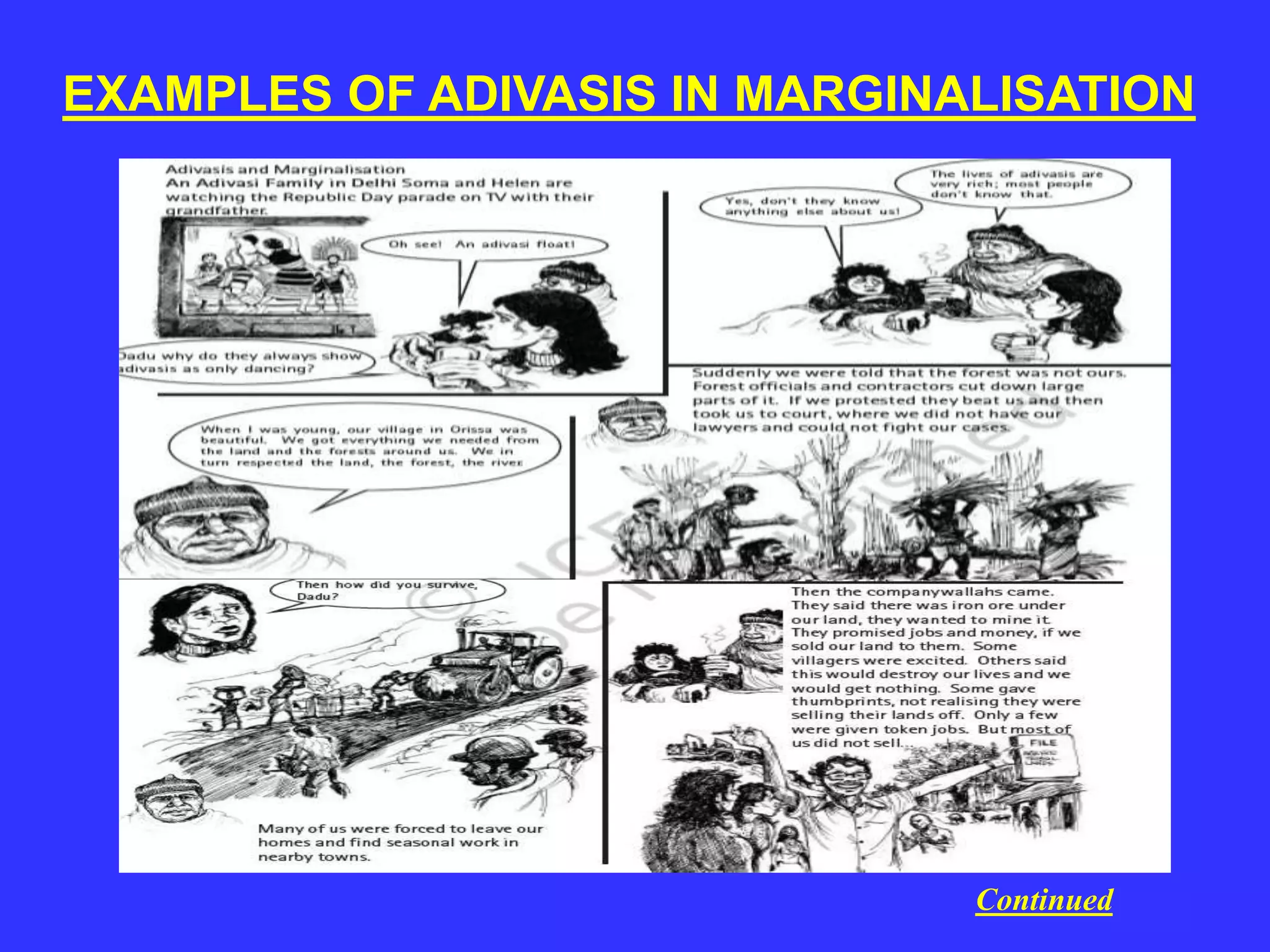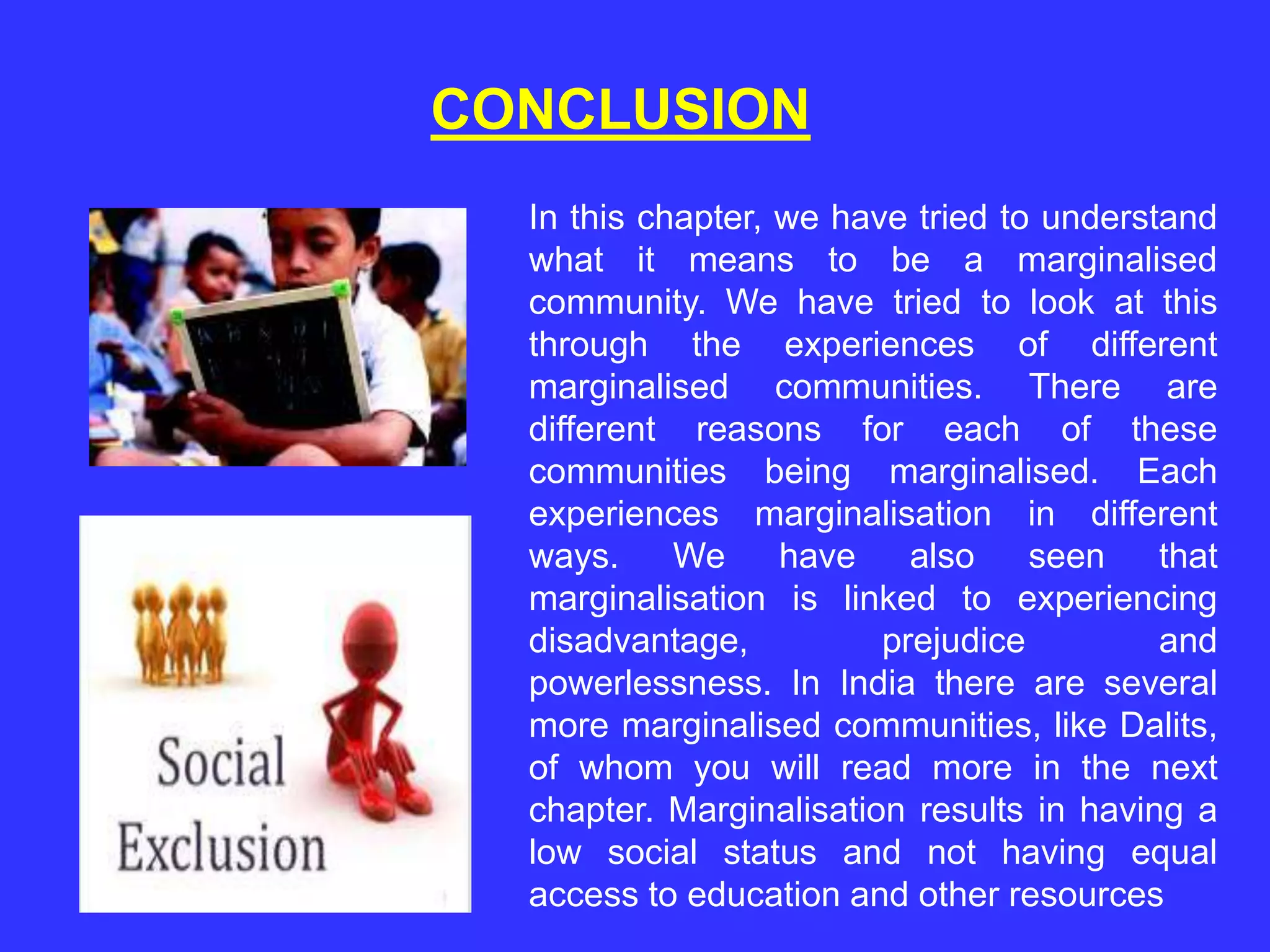The document explores the concept of marginalization, particularly focusing on adivasis and the Muslim community in India. It discusses how adivasis, as original inhabitants, experience marginalization through loss of land and cultural identity, while Muslims face socio-economic disadvantages despite being a significant population. The text emphasizes the need for protections to support these marginalized groups against discrimination and ensure their access to resources and equality.

























